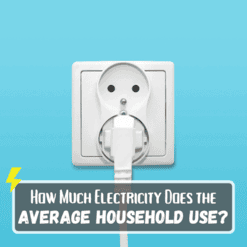
The average household energy use in the U.S. is 10,715 kWh per year, and that number is steadily increasing. Because of this, electricity rates are soaring, and residential customers are struggling to keep up with rising costs. The most important step to take control is to educate ourselves on the effects of energy consumption.
In this article, we explore the trends and effects from household appliances and the amount of electricity they use, to the types of energy being produced. Then we’ll understand that the responsibility for decreasing global usage shouldn’t solely be placed on residential homes.
Key Takeaways: - The average energy use of a house in the U.S. is 10,715 kWh per year. - More than 50% of a household’s annual energy consumption is for space heating and space conditioning. - Just 1% of people cause 50% of global aviation emissions.
Average Energy Use of a House
To understand the energy use of an average home, we need to know what the measurement means. Energy is measured in kWh, which stands for Kilowatt hours. Electricity is measured in Watts, meaning one Kilowatt is 1000 Watts.
Energy providers charge you based on the amount of electricity in Watts you use per hour, which is why it is measured in Kilowatt hours. To get a better idea of this, let’s look at some examples:
- Cooking in an oven for half an hour uses 1 kWh of electricity.
- A typical electrical kettle uses 0.05 kWh to boil one cup of water.
- Running a space heater for 8 hours a day will use 84 kWh a week (this is considered a high wattage).
- A fridge uses 4 kWh per day.
So, now that we have an idea of what this measurement means, let’s take a look at the national average of household electricity consumption in America:

This is a huge amount of electricity, and it’s increasing. To put it into perspective, sub-Saharan Africa uses only 180 kWh. The U.S. has one of the highest average energy consumptions per household. Below is a clear visualization of power usage per capita across the world—the deeper the red, the more energy usage.
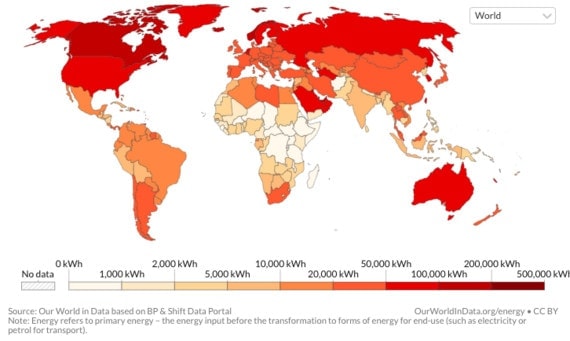
The global north, including Europe and the U.S. produce a carbon footprint 100 times greater than the world’s poor nations in the global south combined. This is due to more privileged lifestyles in the north, meaning poorer nations in the south have a less equal share in the benefits of fossil fuels, including energy consumption.
What Affects Energy Use?
Many factors affect average household energy use, and exploring these will explain the patterns on the map above.
Geographical Location and Climate
The U.S. Energy Information Administration (EIA) states that, on average, more than 50% of a household’s annual energy consumption is just for two uses: space heating and space conditioning. This is why the climate people are living in can drastically alter the amount of energy being used.
In 2021, the U.S. residential and commercial sectors’ electricity use for cooling the interior of buildings was about 389 billion kWh, equaling around 10% of total U.S. electricity consumption.
This is a huge amount that sets the U.S. above many other countries. However, rather than individual responsibility, this is due to weather outside their control.
So, if you’re a homeowner in a particularly warm state, you can expect your monthly electricity bill to consist mainly of your air conditioner. Alternatively, home heating costs you the most in a cold state. However, there are ways to minimize this energy use, like:
- Putting reflective materials in sun-facing windows to keep your home cooler
- Use geothermal energy for A/C heating
- Install a heat pump
Type of Home and its Physical Characteristics
The following characteristics will affect the amount of energy a household uses:
- Size
- Insulation
- Age of the building (the most significant factor according to a new analysis)
- Type of home (apartments, house, mobile home)
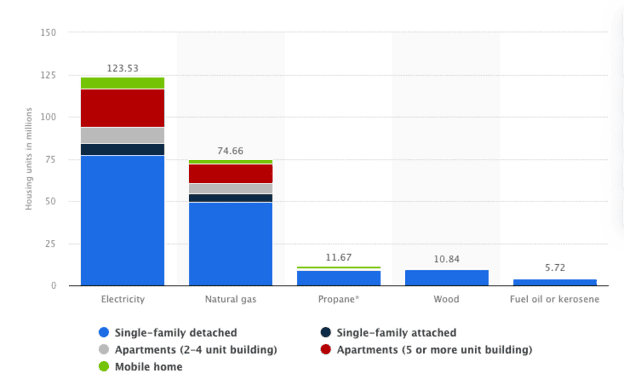
These factors and more will affect how energy efficient a house is. For example, if it’s a large house, there will be more square footage to cool or heat, meaning more energy is needed, and electricity costs will be higher.
Or, if a house has single-glazed windows and poor insulation, more energy would be needed because the heat will escape more easily and quickly.
Number of Occupants
It goes without saying that if more people are in a house, energy usage will be higher. From increased hot water use to more individual devices to power. A crowded house will need more electricity.
Comparison of Appliances and Their Usage
It’s important to be mindful of the appliances we use at home and the amount of energy they need to run. This could be keeping an eye on what’s racking up your electricity bill, or knowing what’s most important to replace with energy-saving or more energy-efficient appliances.
Here is a breakdown of some of the essentials:
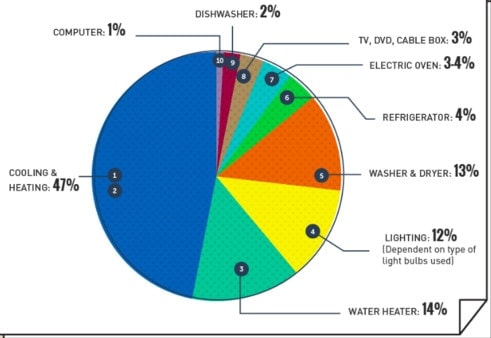
Key takeaways from the pie chart:
- Cooling and heating use the most electricity. If more investment went into making houses well-insulated and well-built, electricity usage would be drastically lower.
- Personal items like computers and televisions make up less than 5% of the energy used. Despite often being told we need to use certain devices less to lower power consumption, it is clear from this chart that these lower-level personal devices should not be our main focus.
- Washing machines and drying, lighting, and water heaters use a similar amount of energy. These four appliances use a significant amount of energy that will add up. So keep a few basic rules in mind: dry clothes outside if possible, turn light bulbs off when not in use, and run washers on low heat to keep your energy costs down.
How Has Energy Use Changed Over The Years?
To understand our warming climate, we need to look at the different amounts of energy we have used over the years. Almost all sources of energy have been increasing, despite the warnings.
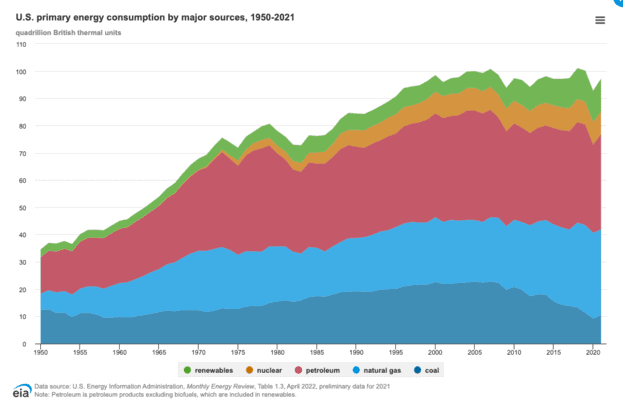
To understand this graph, let’s look at each energy source and its trend.
Renewables
Renewables refer to energy sources that don’t use fossil fuels and are not finite resources, meaning they can’t run out. Renewable energy can generate enough electricity to power homes, schools, and even whole towns. Examples of this include:
- Wind power (wind turbines)
- Solar power (solar panels)
- Hydroelectricity (dams)
- Tidal energy (turbines in tidal streams)
This kind of energy has no harmful by-products, so it doesn’t contribute to warming the climate. For this reason, it has been steadily growing in popularity. Despite this positive trend, more needs to be invested to prevent other harmful energy sources from being used.

As of 2021, roughly 30% of the world’s total energy supply comes from renewable resources. This is a great step in the right direction, but still a long way off from where we need to be.
Nuclear
Nuclear energy refers to controlled nuclear reactions to generate electricity. This is usually through fission, where atoms are split to release the energy inside them.
Nuclear energy generates a lot of electricity. Nations like France, Lithuania, and Slovakia create almost all their electricity from nuclear power plants.
The use of nuclear energy in the U.S. began to decline after 2000. Despite not releasing harmful gas when used, it is very expensive. It can also be dangerous as it produces nuclear waste, which is very toxic, radioactive, and difficult to dispose of safely.
Petroleum
Petroleum, also known as crude oil, makes up much of the U.S.’s energy consumption. It can be used to make:
- Gasoline
- Tires
- Life jackets
- Lubricating oils
- Plastic
A huge amount of carbon dioxide is produced in the crude oil process. Adding this greenhouse gas to our atmosphere affects the natural balance and has adverse effects on our climate.
Despite slightly decreasing from 2005, consumption of petroleum products remains extremely high. This is why investments in electric car infrastructure, renewable energy, and alternatives to plastic are needed.
Natural Gas and Coal
Natural gas and coal are fossil fuels formed by plants, animals, and microorganisms that died millions of years ago. Heat and pressure from the Earth decompose them, and this decomposed matter becomes fuel. To release the energy, you need to burn them. This, like petroleum, excretes harmful gases that have the same effect as discussed above.
Coal consumption has decreased a lot recently because of its economic inefficiency. Despite this, it’s still responsible for 60% of the US’s CO2 emissions.
The use of natural gas reached an all-time high in 2021. This was mainly because of advances in drilling technology, making natural gas energy more readily available and increasing consumption.
What Does This All Mean?
From these trends, we can see that petroleum is the most significant energy source for the US, and unfortunately, it is the most polluting. However, only 2.8% of the energy produced by petroleum is used for residential purposes and only 0.5% for electric power.

This means that we should encourage global corporations to make big changes instead of focusing on people turning lights off, having short showers, and giving up their small pleasures.
Private jets and frequent flying for business are big culprits. Just 1% of people cause 50% of global aviation emissions. Remember this next time you’re being told to take fewer flights to help the environment!
What Can You Do to Reduce Your Household Energy Consumption?
We need to be aware of the responsibility being shifted onto residential energy consumption when it’s often a drop in the ocean compared to corporate consumption.
That said, there are small changes we can make that—if wide-spread—can have big results.
Here are a couple of things to be mindful of in your home:
- Consider natural heat regulation. Because most of your energy bill goes to air conditioning, try to regulate your heat naturally. This can include using fans, opening/closing windows, and wearing more/fewer layers.
- Shut off lights and electronics when not in use. This won’t take up too much of your time or drastically change how you live, so just remembering to turn off appliances after you’ve used them is a great way to make a big difference.
- Don’t leave water running when you’re not using it. We’ve all left the sink run with scalding hot water while we scrub a dish. Instead, try to turn on the water only as-needed. Not only will this help with energy, it will also reduce water waste.
Our Climate and Energy Usage
The climate crisis we are currently living in is primarily due to the increase in global energy usage. It’s incredibly important to decrease this consumption in order to prevent these further issues.
Species Extinction
In the previous exploration of the types of energy used, we can see the gases being produced that warm our climate. The warmer our environment gets, the more species will become extinct.
This is due to the loss of their habitat. For example, high temperatures will melt ice caps, resulting in polar bears losing their environment.
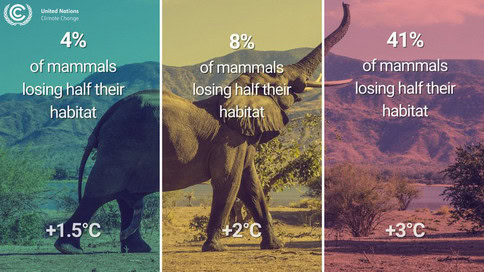
Extreme Weather
Scientists worldwide have published more than 150 attribution studies linking extreme weather to human influence.
The graph below shows an increase in ‘loss events’ due to extreme weather. This means events, such as storms and floods, that have resulted in the loss of lives.

Smog and Air Pollution
Respiratory diseases have become more prevalent due to the increase in greenhouse gases released in energy production processes, making the air quality significantly poorer. This includes conditions like asthma, pneumonia, and allergies.
Besides this, warmer temperatures are creating longer pollen seasons, meaning people suffer from more severe allergies for longer.
Conclusion
Let’s sum up what we’ve learned:
- The average house in U.S. uses 29 kWh per day and 10,715 kWh per year.
- Geographical location and climate, type of home, and the number of occupants can affect how much energy a household consumes.
- Heating and cooling a house uses roughly 50% of all the energy consumed.
- Energy use is increasing, but so is renewable energy. Crude oil energy production is the most significant in the U.S.
- Systemic changes rather than just residential changes are needed to decrease global energy consumption.
- Increased energy production leads to a warmer climate. This causes extreme weather, species extinction, and air pollution.
So, although we all need to use less energy overall, it is not solely our responsibility. We can still enjoy living in a warm house and taking hot showers as long as we are mindful of our home energy usage and educate ourselves on the effects of electricity production. A global effort is needed in order to reduce our need for destructive energy sources.
Read Next: